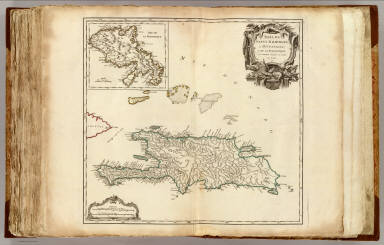In this last article I will try to sum up the outcome of my research into the role of the French Caribbean in the first steps of commercial production of rum.
In the 1620s and 1630s, the French began to settle in the Caribbean. In those years, they had known America and its resources for well over a century. In particular, they had a long experience of travelling to and trading with Brazil, the greatest producer of sugar of the age. And we know that in Brazil rum was already produced, at least from the beginning of 1600s.
When the French settled in the Caribbean, they already had a long and successful commercial experience of producing and exporting eau-de-vie de vin, water of life from wine, on a large scale. Or, to say it in another way, in the 1620s and 1630s the business of distilling had been well established in France for some time.
After this short historic introduction, here are some contemporary French documents.
- Minutes of the Assembly of the Company’s Stakeholders, 13 August 1639. “Regarding the request made by Jean Faguet in order that the Company grant him for six years an exclusive license to make water of life on the islands of Martinique and Saint-Christophe, both from wine and any other fruit or legumes that he will be able to grow or find through his ingenuity and industriousness on the above-mentioned islands, … the aforementioned Faguet is granted exclusive license to make water of life on the aforementioned islands, using what grows on them, for six years, on condition that he pays to the Company the XXth part of the water of life he will produce, with everybody else being banned from producing it on the two islands during said period under penalty of confiscation of the water of life they have produced and a fine of a thousand pounds of tobacco.”
- Jacques Bouton “Report on the settlement of the French after the year 1635” published in 1640. “They [the slaves] are fond of a strong water of life that they call stomach burner”.
- Minutes of the Assembly of the Company’s Stakeholders, 7 January 1643. “Regarding the requests submitted by Captain Flament, letters in his favour will be written to Mr Aubert on the island of Guadeloupe and to Mr de Leumont, intendant general of the affairs of the Company on Saint Christophe. He will be granted permission to make water of life for a period of three years without prejudice to the public freedom to produce it as it is common, and to ship it from France to the islands.” In other words, the Company grants Captain Flament permission to produce spirits, but not exclusively. Other colonists are specifically allowed the right to continue producing them, as evidently they had been doing for some time.
We cannot be completely sure, though, that the water of life quoted in these documents was actually rum. Even before the Europeans arrived, the natives made various fermented beverages and the settlers drank them for want of anything better. We know that the Europeans distilled these beverages but it is probable that they also produced a spirit from sugar cane, that is, rum. Because there was sugar cane in the French islands.
- Hyacinthe de Caen “Relation des îles de Saint-Christophe, Gardelouppe et la Martinique…”, 1641. “As sugarcane is cultivated in this place, there will be plenty of work making sugar, primarily on the islands of Guadeloupe and Martinique, that will one day be able to supply France…”
- Maurile de Saint-Michel “Voyage des Isles Camercanes en l’Amérique”, published in 1652. “Never before have I seen a country where sometimes more diverse kinds of beverages can be found than on S. Christophe: more ancient and longer Frenchified than Martinique; as the Dutch bring their beer there; the Normans their cider, but it does not keep for long; those from S. Malo stop in Madeira and collect the wine which they carry and sell at a hefty price; those from La Rochelle the wine from Gascony which ages and becomes sour very soon; but vinegar sells well; everybody works hard to get water of life to the island, and that is the lifeblood of this country. Some send there [water of life] from rosolio; others produce it from sugarcane wine, and I will soon tell you how it is produced; others from Oüicou; others from Masbi.” Here there can be no doubt whatsoever: Maurile de Saint Michel tells us clearly that on Saint- Christophe several types of spirits were produced regularly, among which one made from sugarcane: RUM.
- Jean Baptiste Du Tertre, “Histoire générale des isles de Christophe, de la Guadeloupe, et le Martinique et autres” published in 1654. “Another great bounty is obtained from this sugarcane; because from it excellent water of life is produced, which is sold at a high price in the country.”
- Jean Baptiste Du Tertre “Histoire générale des Antilles habitées par los Francois” published in 1667. “Neither the crushed cane nor the scum that is removed from the second and third sugar boiling cauldrons is useless. The scum is reserved in a trough where it is kept to make eau-de-vie, or brandy. The slaves prepare an intoxicating drink from it, and it sells quite well on the islands; sugar syrup also sells quite well because it is used in making spice bread in Europe. I have also seen it boiled together with ouicou which renders a drink even stronger than the best Flemish beer. As for the crushed cane, it is fed to the pigs which fattens them and gives the meat and lard an excellent flavor. The juice from crushed sugar cane which isn’t tipped quickly enough into the boiling cauldrons, goes sour immediately, and when this is mixed with water the preparation is called vesou, which also sells well on the islands. All these little tricks contribute significantly to a well-run sugar plantation.” (translated by Bernie Mandelblatt in “Atlantic consumption of French Rum and Brandy and the economic growth in the Seventeenth- and Eighteenth- Century Caribbean” 2011) Then, speaking about the slaves, he writes: “They are not given water of life to drink, except when they are obliged to do very hard work, or when they are planting tobacco under pouring rain. Water of life has been a bit more common on the islands since sugar started to be produced there, thanks to the secret which has been discovered of making it from the skimming taken from the cauldrons …”
Therefore, in two different French books, de Saint-Michel’s “Voyage des Isles Camercanes en l’Amérique” and Du Tertre’s “Histoire générale des isles de Christophe, de la Guadeloupe, et le Martinique et autres” , both published a few years before Ligon’s, we can find the earliest indisputable evidence of rum production in the Caribbean. Can we then state that the French were the first and that Barbados came in second? No, we can’t, not yet at least. There are other English documents in Barbados, older than Ligon’s book, but less clear, which ought to be studied thoroughly. And I don’t know whether it’s worth it, in any case it would be merely a matter of few years. But now we can say with certainty that, in the race to grow sugar and produce rum commercially in the Caribbean, the French and the English got to the finishing line together. And that both learnt from Portuguese Brazil.
In our modern world the cultural hegemony of the English language is a fact. Moreover, for centuries the British were by far the biggest producers and consumers of rum. All this explains why the attention of academics, popularizers and enthusiasts has focused on Barbados and much less on Saint-Christophe and Martinique. But the historic truth is that the French Caribbean and English Barbados have been together the first cradles of rum.
But if large scale commercial production of rum started at the same time in the French and English Caribbean, why did rum later become a typically British spirit? In other words, why didn’t the French producers have the same success as their English neighbors and rivals? We’ll endeavor to find an answer to this question through a new research dedicated to French Rum’s Early History.
Marco Pierini
PS: I published this article on April 2019 in the “Got Rum?” magazine. If you want to read my articles and to be constantly updated about the rum world, visit www.gotrum.com


